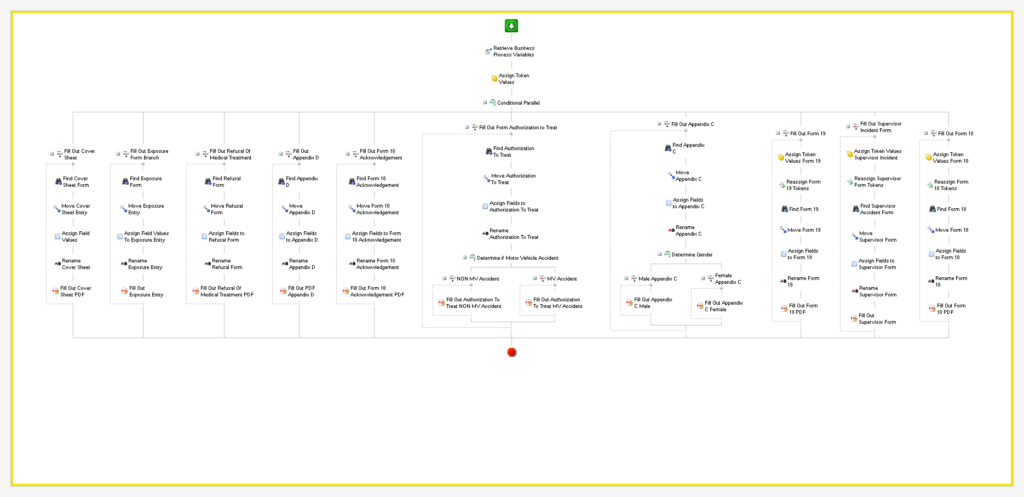Human-Centric Solutions
Risk Management Portal
“The Risk Management Portal was our leeway into building conversational forms with Laserfiche Forms. With the risk management portal, we ask users a series of questions like, was there exposure to blood or other pathogens, or does the employee want to file a workers compensation claim, and then it’ll give them the forms they need. We’re eventually going to take that portal and fully make it a conversational form,” explained Mark.
Personnel Status Request Chatbot
Their first chatbot created was for their PSR Form. The development of this form allowed their team to handle anything an employee may experience during the course of their career at Cabarrus County. Examples of how employees use the PSR Form are:
- Taking leave without pay
- Completing a performance review
It makes it easier on their staff because the data auto fills on the form based on the sources selected. They took a process that previously required completion of more than 20 fields in the employee system down to five button clicks via a conversation with the chatbot!
The Cabarrus team is focused on providing human-centric solutions for fulfilling business requirements.
Not only did this simplify their processes, but it improved the accuracy of their data. It didn’t take long for people to begin singing praises for this new approach. “As soon as we rolled it out, people loved it because it is so easy to use, and it works on any device. They can use it on their phones, just like texting, and it’s so intuitive,” explained Patterson.
Quarterly Inspections Chatbot
It wasn’t long before they found other time intensive processes, they could convert into chatbots. They developed a chatbot that uses Laserfiche as a component for the Sheriff’s Department’s quarterly inspections. They inspect more than 50 categories. The following is a sample of the types of information they must collect:
- Uniforms
- Computer Equipment
- Vehicles
- Firearms
- Portable Printers
- Condition of Items
- Serial Numbers
- Notes About Each Item’s Condition



